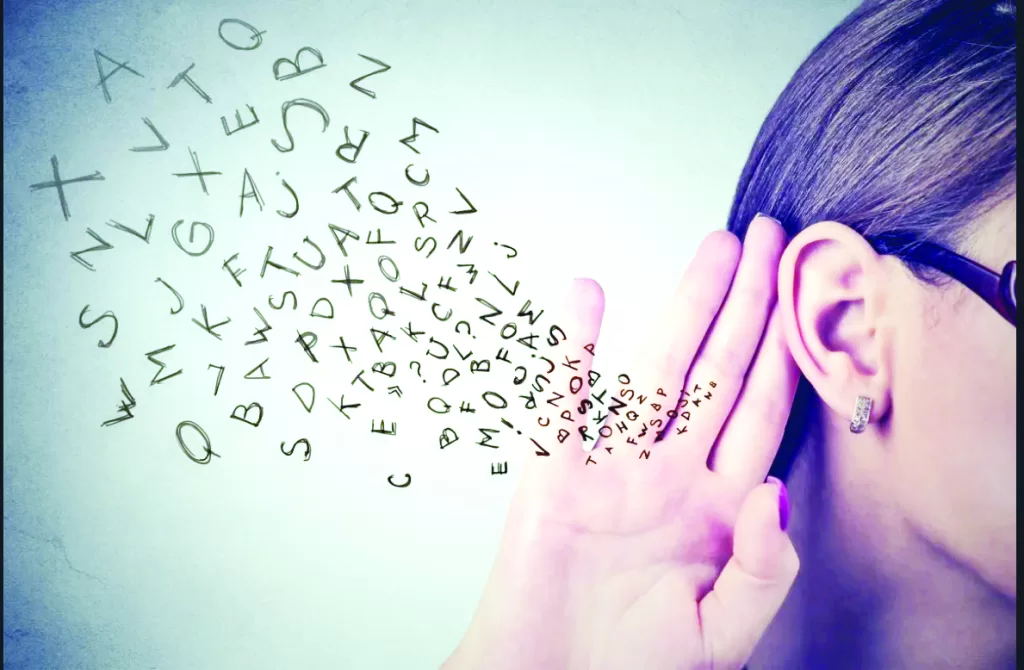We are what we speak

By Dr Laila Abdel Aal Alghalban
We are what we speak. This argument seems plausible to a great extent. When we speak, people hear us and take less than a second to make guesses about who we are: our age, education, social status, world experience, trustworthiness, personal traits, wellbeing, sensitivities, beliefs, etc. They also make judgments about us and whether we appeal to them or not. In other words,our voice, like a fingerprint, instantly betrays our personality and determines our prospects of success in life. Of course, we never mull over these lengthy, unconscious and complicated cognitive processes; they go unnoticed. The communicative abilities and functions of our human language, though seem simple, easy and taken for granted, involve a very highly complicated and puzzling set of processes. How do we speak? How do we hear and process speech? And what makes everyone’s voice unique, one of a kind?
We are because we can talk: Why human speech is exceptional
Human beings,like many animals and insects, use sounds to signal meaning. However, the sound-based signalling system of communication in human language is more complicated and immensely unique. Why? Human language is extraordinary in several distinctive properties; one of which is duality of patterning. Human speech is made of a number of discrete, separate sounds. We use them creatively to produce infinite combinations of words; just like the ten digits 0, 1, 2, 3, 4, 5, 6, 7, 8 and 9 we use in everyday numerals; they are limited in number, but allow us to make never-ending numerals. The capabilities and impact of human speech have long fascinated researchers from a wide range of sciences: philosophy, literary theory, sociology, anatomy, neurology, artificial intelligence, politics, speech pathology, neuroscience, etc., all trying to shed light on the mechanism of speech to help us understand what it means to be humans. However, two main or twin sciences are traditionally taking the lead in studying human speech: phonetics and phonology. The relation between them is so controversial.
Speech starts in the brain
Before we speak, neurons in many regions in our brains join forces to formulate an idea, a thought. This is done through an incredible range of electrochemical interactions, usually in response to a stimulus coming to us from the external world through our senses. Concepts and their words are semantically and phonologically organised in our mental dictionaries and form a network connected by synapses that physically realise neural circuits in our brains.

Take, for instance, the words ‘money’ and ‘talks.’ Each is activated separately in a different part of the semantic memory in the brain. The more they are simultaneously activated, the stronger they get, and the stronger the links or pathways between ‘money’ and ‘talks’ will be, until they form a neural circuit. This lends support to the amazing principle“neurons that fire together, wire together,” first introduced by the renowned neuropsychologist Donald Hebb in 1949 to describe how neural pathways in the brain are made and got stronger through repetitive and simultaneous activation of concepts. When words are activated to form a sentence, everything relates to meaning, context, etc. is initiated simultaneously. A thought is formulated, then sent to the motor cortex to give orders to the organs of speech to act and convert the thought into sounds. Our brains have mental sound categories called phonemes, which could be termed the alphabet of sounds.
Our incredible hearing and processing mechanisms
How do we hear our voice? Sound travels as a series of vibrations or sound waves through air and goes into the ear and vibrates the ear drum. The vibrating eardrum causes the vibration of three little bones: hammer, anvil and stirrup. Their vibration goes through cochlea,a spiral structure, which transforms those vibrations into nerve signals to be sent to the brain to perceive and process. This electrochemical process is essential for our brain to interact with sounds. The incoming signals are filtered and scanned in the brain to see if there are heard before and there are already mental copies existing to match with. If yes, speech perception takes places, if not, processing comes to a halt. Thus, we do not hear the speech signal objectively, we hear what our brains creates out of filtering the message.
Why does everyone have a unique voice?
This could be one of the most frequent questions that resound in our minds. No two individuals have the same voice quality, no matter how similar or identical they may sound to us. The uniqueness of an individual’s voice is largely determined by a number of factors. One of them is the anatomical structure (shape and size) of their vocal folds. Another factor is the shape and size of their heads as well as their bodies. A third one is how neat, harmonious and orderly the multiple frequencies of one’s speech signal are layered on top of each other, which explains why some people have very pleasant vocal quality or unpleasant vocal quality.
Finally, this is just a drop in the ocean of human speech. Many captivating aspects are awaiting.
By Dr Laila Abdel Aal Alghalban
Professor of linguistics
Faculty of Arts
Kafr el-sheikh University
Email: [email protected]

